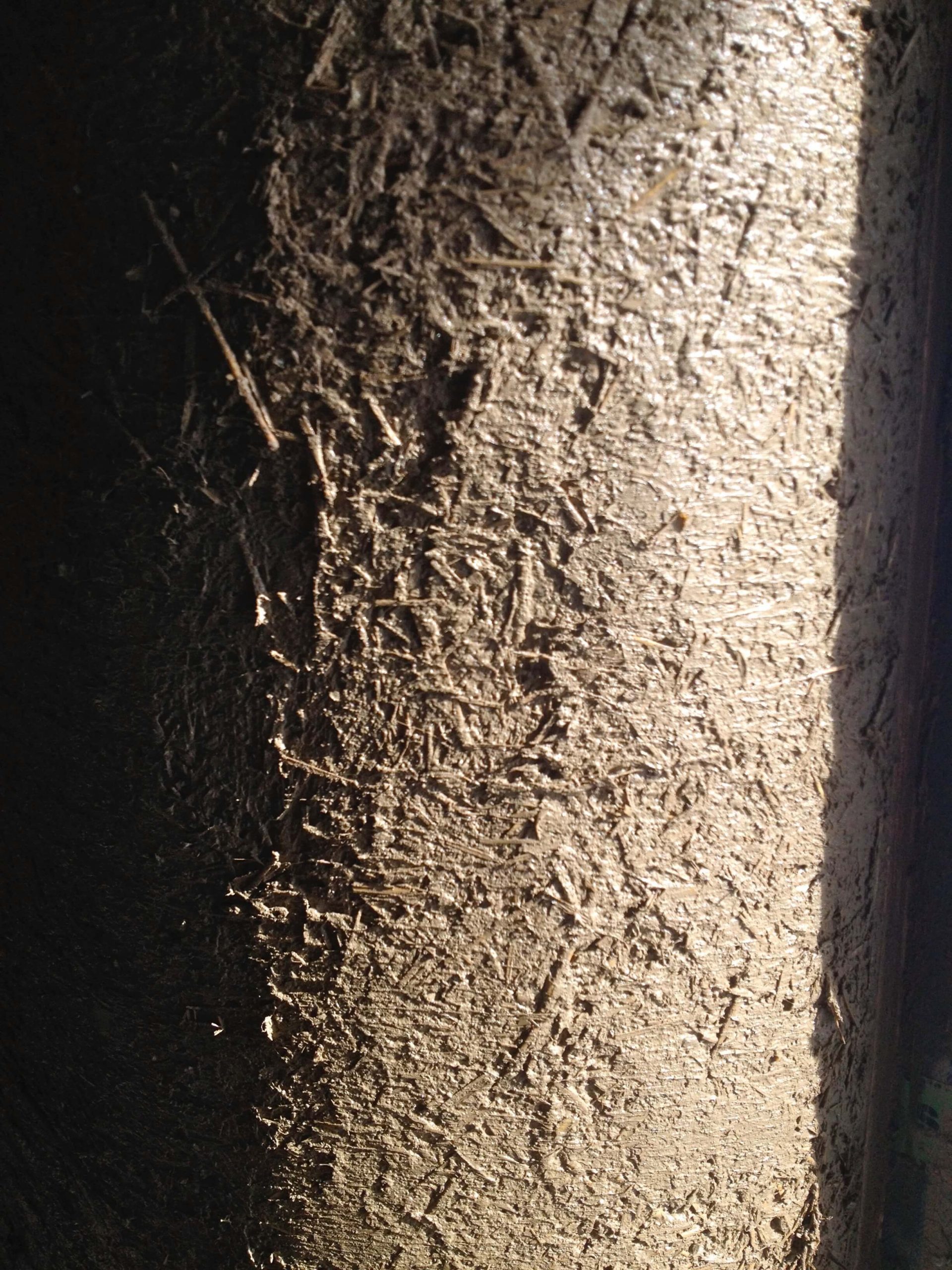It’s no secret that we love clay plasters at Endeavour, and the best case scenario is being able to use a clay soil right from the building site. It just so happens that we lucked into this for the teachers’ union office project!
After digging some test holes on the site early in the spring, we discovered that there was a strata in the site soil that was quite clay-rich and appeared to have almost no stone in it (which is very rare in this part of the world). We made some plaster samples from this soil and found that a wide range of recipes seemed to be viable. We left the samples face up into the elements for the whole summer, and one in particular held up really well so we knew we had a workable site plaster.
Our approach to earthen plasters has changed over the years, with the addition of more and more chopped straw over the years so that we have reached a point where we have a very high-straw content in the plaster. We have found that the high-straw recipe allows us to build up the entire thickness of the plaster in a single application. The volume of chopped straw supplies a huge amount of tensile support for the clay, and means that we don’t need to add nearly as much sand as we used to do when our plasters used less chopped straw.
The result is a mix that is very sticky thanks to the high clay content, and has a huge amount of “inner cohesion” that allows it to be applied at almost any thickness (4-5 inches is not unreasonable, if necessary!) with no cracking.
Rather than applying a very runny slip coat via sprayer or dipping the bales, we’ve found that a layer of the same mix minus the straw works well as a “primer”. We apply the primer to the bales, and then follow it immediately with the high-straw “body coat.” It’s sort of a two-part, one-coat system. It’s great to be able to apply the full desired amount of plaster and achieve the final look we want in a single application. Less time, and much less concern for de-lamination between successive coats.
The mix stays moist for a day or two, so it allows a lot of time to get the walls looking how we want, and the mix is very intuitive for those just starting to learn to plaster, while being fast to apply for those with more experience.
Our recipe (by volume) for this plaster is:
- One part high-clay content soil
- One part chopped straw (1/4 – 1 inch)
- 3/4 part rough sand
There’s nothing like playing in the mud and making a viable building at the same time!






